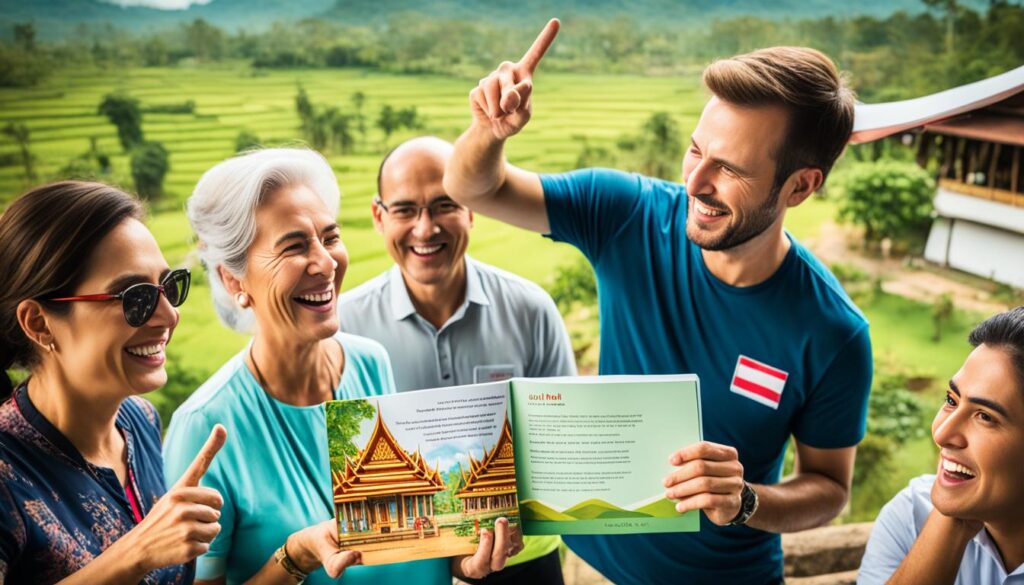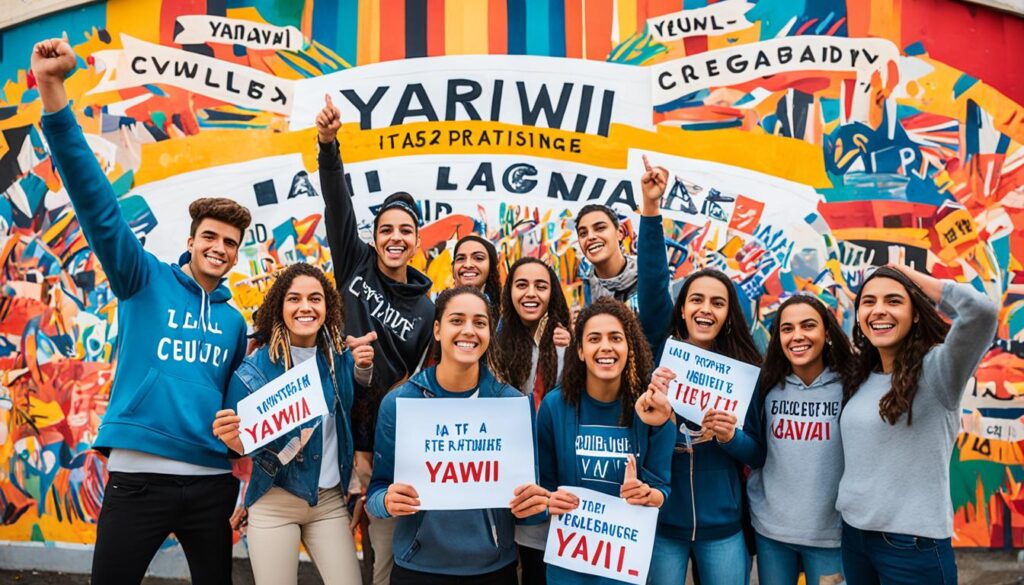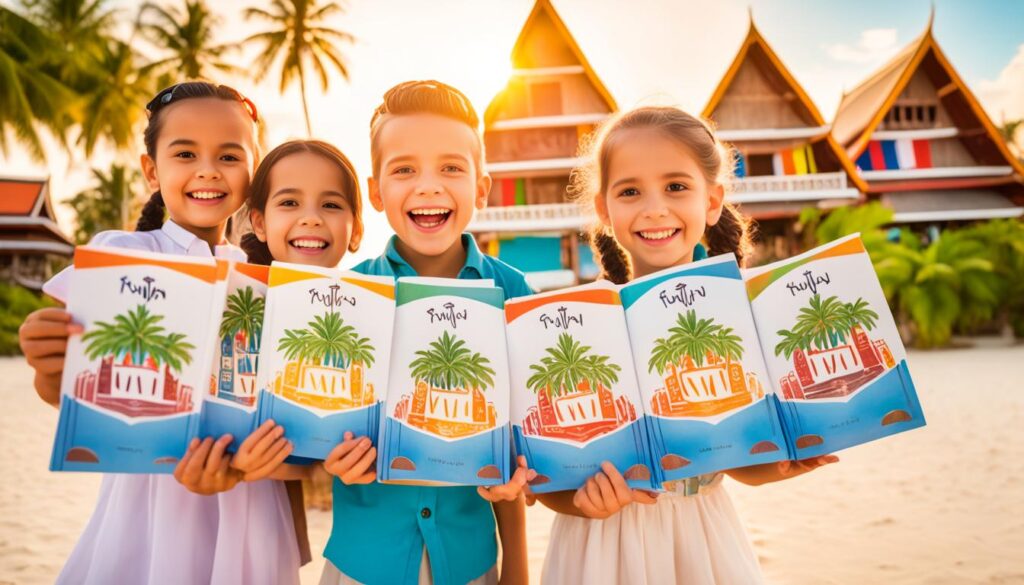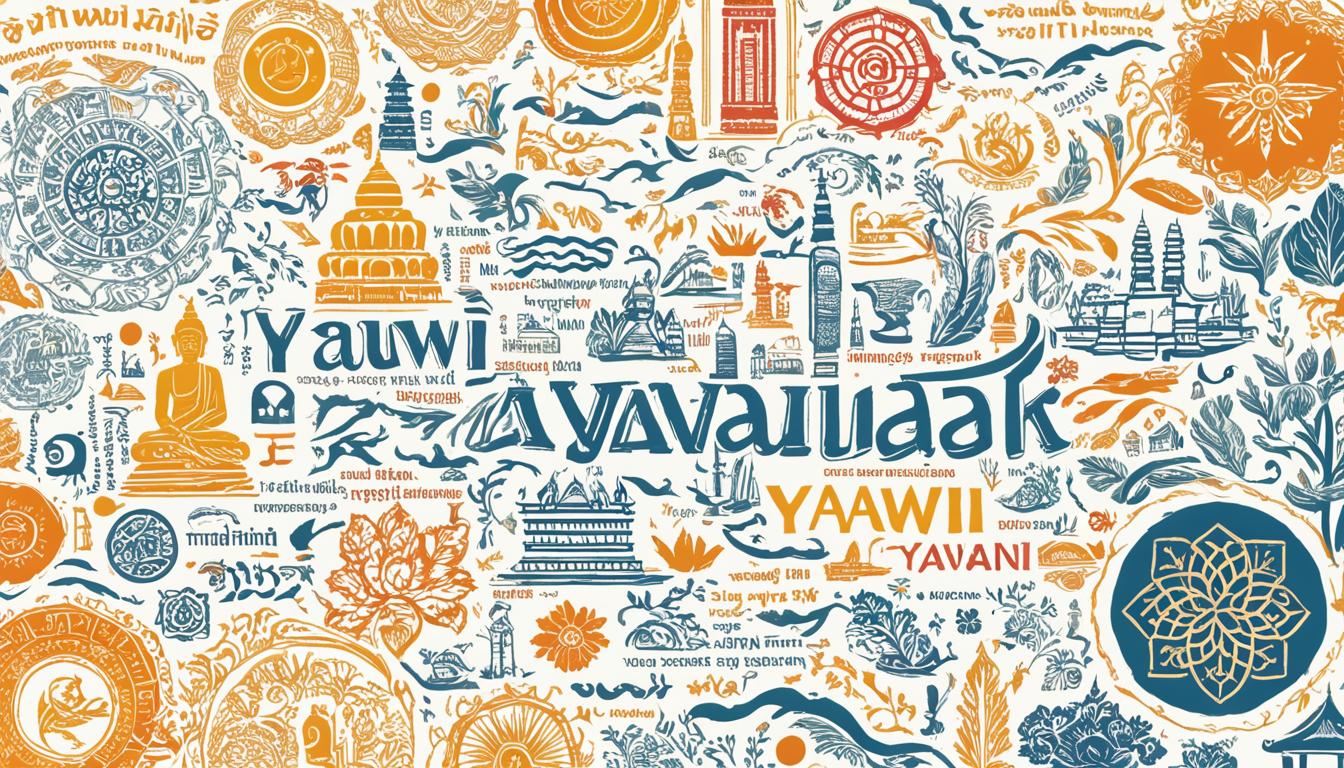The Yawi language belongs to the Yawi language family, which is a branch of the Austronesian language family. Its development has been influenced by the historical and cultural ties between the Malay Muslims in Thailand and their counterparts in Malaysia and Indonesia.
With approximately 1.4 million Yawi language speakers in the region, efforts are being made to preserve and promote the language within the local community. Resources, such as Yawi computer fonts and online media materials in Yawi, are available to aid in learning and preserving this unique dialect.
Characteristics of the Yawi Language
The Yawi language, primarily spoken by the Malay Muslim community in the southern provinces of Thailand, possesses unique characteristics that set it apart from other languages in the region. It shares a close relation with the Malay language and has its roots in the historical connections between the Malay Muslims in Thailand and the neighboring Malay-speaking communities in Malaysia and Indonesia. This linguistic bond has contributed to the development of distinct grammar, vocabulary, and pronunciation in the Yawi language.
One of the key characteristics of the Yawi language is its close resemblance to the Malay language. Many words and phrases are similar, allowing for mutual intelligibility between these languages. However, Yawi has evolved with its own unique expressions and idiomatic usage, showcasing the cultural nuances and historical influences of the Malay Muslim community in Thailand.
The Yawi language also exhibits specific grammatical features that differentiate it from other languages spoken in Thailand. It follows a subject-verb-object word order, with various verb forms to denote tense, aspect, and mood. Additionally, Yawi employs agglutination, where affixes are added to root words to convey additional meaning, resulting in a flexible and expressive form of communication.
Furthermore, the Yawi language possesses a rich vocabulary, enriched by borrowings from Arabic, Persian, and Sanskrit, reflecting the historical and cultural connections between the Malay Muslims and other civilizations. This blend of linguistic influences has contributed to the diversity and distinctiveness of the Yawi language.
The Yawi language is also phonologically distinct, with its own set of phonetic rules and pronunciation patterns. It uses a modified version of the Arabic script, which has been tailored to suit the unique phonetic qualities of the Yawi language, allowing for accurate representation of its sounds.
“The Yawi language, with its unique characteristics and historical origins, represents the linguistic richness and cultural heritage of the Malay Muslim community in Thailand.”
The Yawi language is not only a mode of communication but also a cultural treasure that plays a significant role in preserving the identity and heritage of the Malay Muslims. The next section will explore the speakers of the Yawi language and the efforts made towards its preservation.
Yawi Language Speakers and Preservation Efforts
The Yawi language is of great significance to the Malay Muslim community residing in the southern provinces of Thailand. It serves as a vital means of communication and a symbol of their cultural heritage.
It is estimated that there are approximately 1.4 million Yawi language speakers in the region. These individuals play a crucial role in the preservation and promotion of the language.
Efforts have been undertaken to ensure that the Yawi language continues to thrive and be valued by future generations. One such initiative is the incorporation of Yawi language teaching in Islamic pre-schools. By making the language an integral part of the curriculum, the younger generation can develop proficiency and a deep connection to their linguistic roots.
Furthermore, resources specifically dedicated to the Yawi language have been created to support its preservation. This includes the development of Yawi computer fonts and the production of online media materials in Yawi, providing accessible learning materials for language learners.
These preservation efforts aim to create an environment that encourages the usage and appreciation of the Yawi language within the community. By promoting linguistic diversity and embracing cultural heritage, the Yawi language can flourish and hold an essential place in the Malay Muslim identity in Thailand.
Preservation Efforts at a Glance
| Initiative | Description |
|---|---|
| Yawi Language Teaching in Islamic Pre-schools | Incorporating Yawi language lessons in the curriculum of Islamic pre-schools to ensure the transmission of the language to younger generations. |
| Development of Yawi Computer Fonts | Creating computer fonts specifically designed for the Yawi language to facilitate its usage in digital platforms. |
| Production of Online Media Materials in Yawi | Developing online resources such as videos, articles, and audio recordings in Yawi to enhance language learning and raise awareness about the Yawi culture. |
By providing educational opportunities and accessible resources, the preservation efforts contribute to the strengthening of the Yawi language and its significance in the lives of the Malay Muslim community in Thailand.

Cultural Heritage of the Yawi Language
The Yawi language holds a significant place in the cultural heritage of the Malay Muslims living in the southern provinces of Thailand. Beyond being a tool of communication, it serves as a symbol of their identity and heritage, representing a deep connection to their religious and cultural practices.
Within the community, the Yawi language finds its presence in various aspects of daily life, especially in Islamic ceremonies, prayers, and religious teachings. It is through the Yawi language that the Malay Muslims share their faith, express their spirituality, and uphold their traditions.
By preserving and promoting the Yawi language, the cultural heritage of the Malay Muslims in Thailand is safeguarded. It allows for the continuation of their rich linguistic and cultural traditions, ensuring that future generations maintain a strong sense of identity and belonging.
“The Yawi language is more than just words; it is a thread that connects us to our ancestors, our faith, and our cultural heritage.” – Hana, a Malay Muslim community member.
Preserving Language, Preserving Culture
The Yawi language acts as a vessel, carrying the traditions, customs, and narratives of the Malay Muslim community. Through the spoken and written word, valuable cultural knowledge is shared, ensuring its preservation and passing it down through generations.
- It enables the transmission of traditional stories, songs, and poetry, ensuring that the rich oral traditions are celebrated and cherished.
- It plays a crucial role in the preservation of historical narratives, allowing the collective memory of the community to endure.
- It empowers the preservation of cultural practices and rituals, providing a platform for their continuation and wider understanding.
Through the recognition and promotion of the Yawi language as a vital component of the cultural heritage, the Malay Muslims in Thailand validate and celebrate their unique identity, fostering a stronger sense of community and pride.
Youth Activism and the Yawi Language
Youth activism plays a crucial role in the promotion and preservation of the Yawi language among the Malay Muslim community in the southern provinces of Thailand. Malay youths are actively engaged in various initiatives and campaigns aimed at celebrating their cultural heritage and reinforcing their Malay identity through the use of the Yawi language.
These passionate young activists organize events, both online and offline, to raise awareness about the importance of the Yawi language and encourage its use among their peers. They believe that by revitalizing the Yawi language, they can ensure its visibility and prominence among the younger generation.
The youth activists emphasize the cultural richness of the Yawi language and its significance in preserving the unique cultural heritage of the Malay Muslims in Thailand.
Through their activism, these dedicated individuals highlight the connection between language, culture, and identity. They understand that the Yawi language not only serves as a means of communication but also represents the cultural heritage of their community.
By actively promoting and engaging in the use of the Yawi language, these young activists are contributing to the preservation and revitalization of their Malay identity. They believe that by embracing their language, they can strengthen their sense of belonging and pride in their cultural heritage.
Their efforts are crucial in ensuring the continued appreciation and recognition of the Yawi language within the younger generation of Malay Muslims. Through their dedication, they inspire others to embrace and value their linguistic and cultural roots.
Role Models and Inspirations
Several prominent figures serve as role models and inspirations for youth activists advocating the use and preservation of the Yawi language. One notable example is Nurul-Ain Hj Hashim, a young Malay linguist and activist who actively promotes the Yawi language through educational initiatives and awareness campaigns.
Online Platforms and Community Initiatives
These youth activists leverage various online platforms and community initiatives to connect, engage, and inspire others in the promotion of the Yawi language. Social media platforms, blogs, and dedicated websites serve as spaces for sharing language resources, cultural insights, and stories that celebrate the unique identity of the Malay Muslim community.
Collaborations and Partnerships
The youth activists actively collaborate with schools, universities, and community organizations to create opportunities for education and cultural exchange. They organize workshops, seminars, and conferences that bring together individuals who share a common passion for the Yawi language and its preservation. By fostering these collaborations, they amplify their impact and create a strong network of like-minded individuals working towards a common goal.
Future Prospects
The active involvement of youth activists in the promotion and preservation of the Yawi language provides hope for its continued vitality in the future. Their passion, dedication, and innovative approaches contribute to a thriving cultural landscape that values and celebrates the linguistic and cultural heritage of the Malay Muslims in Thailand.
| Youth Activism and the Yawi Language |
|---|
 |
The Role of Tadika Schools in Yawi Language Education
Tadika schools, also known as Islamic pre-schools, play a significant role in the education and promotion of the Yawi language within the Malay Muslim community. These schools use Yawi as the language of instruction and incorporate Islamic teachings and values into their curriculum.
With a focus on providing a strong foundation in Islamic education, Tadika schools also contribute to the preservation and transmission of the Yawi language. By immersing children in the language from an early age, these schools ensure that the Yawi language continues to be spoken and valued by future generations of Malay Muslims.
Furthermore, Tadika schools play a crucial role in fostering a sense of identity and belonging among Malay Muslim children. By learning and embracing the Yawi language, they develop a deeper connection to their cultural heritage and strengthen their ties to the Malay Muslim community.
Overall, Tadika schools serve as platforms for language education, cultural preservation, and community building. By incorporating the Yawi language into their curriculum, they contribute to the vitality and longevity of this unique linguistic and cultural tradition.
Challenges and Opportunities for Yawi Language Preservation
Preserving the Yawi language poses both challenges and opportunities. While there are ongoing efforts to ensure its survival, certain obstacles need to be addressed in order to secure the language’s future.
One significant challenge is the limited government support for the promotion of the Yawi language. Without adequate financial assistance and official backing, it becomes difficult to implement effective preservation initiatives. Additionally, restrictions on the use of specific terms and expressions related to Malay identity can hinder the natural development and evolution of the language.
Another concern lies in the potential interference in the curriculum of Tadika schools, which could affect the teaching and transmission of the Yawi language. Any disruption to the established educational framework may impact the language’s preservation efforts and the cultural growth of the Malay Muslim community.
However, despite these challenges, there are promising opportunities for the Yawi language’s preservation. The increasing awareness and activism among Malay youths are driving positive change and revitalization. Their dedication to promoting the Yawi language serves as an inspiration and highlights the immense potential for its continued existence.
Furthermore, the Thai government’s recognition of cultural pluralism as a policy guideline presents a unique opportunity. By embracing diversity and supporting the preservation of indigenous languages like Yawi, the government can contribute significantly to the language’s longevity and cultural heritage.
The Challenges:
- Limited government support for Yawi language promotion
- Restrictions on the use of certain terms related to Malay identity
- Potential interference in Tadika school curricula
The Opportunities:
- Increasing awareness and activism among Malay youths
- Recognition of cultural pluralism by the Thai government

| Challenges | Opportunities |
|---|---|
| 1. Limited government support | 1. Increasing awareness and activism among Malay youths |
| 2. Restrictions on certain terms and expressions | 2. Recognition of cultural pluralism by the Thai government |
| 3. Potential interference in Tadika school curricula |
Conclusion
The Yawi language plays a crucial role in preserving the cultural heritage of the Malay Muslims in Thailand. Efforts are underway to ensure the survival and promotion of this unique language, with a focus on youth activism, Tadika schools, and the creation of resources. By valuing and preserving the Yawi language, the Malay Muslims can continue to honor their rich linguistic and cultural traditions.
Not only does the Yawi language serve as a means of communication, but it also represents the identity and heritage of the community. Through initiatives led by Malay youth activists, the importance of the Yawi language is being highlighted, and its use is being encouraged among younger generations.
Tadika schools, also known as Islamic pre-schools, play a vital role in educating children in the Yawi language. These schools not only provide a strong foundation in Islamic education but also contribute to the preservation and transmission of the Yawi language. They are integral in fostering a sense of identity and belonging among Malay Muslim children.
The efforts being made to preserve the Yawi language are essential for upholding the cultural heritage of the Malay Muslims. With continued support and recognition, the Yawi language will continue to thrive as a significant aspect of the community’s identity and play a crucial role in maintaining their rich linguistic and cultural traditions.
